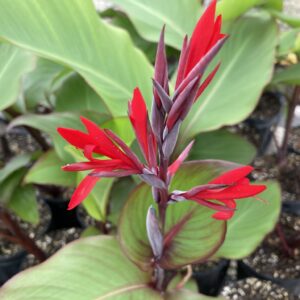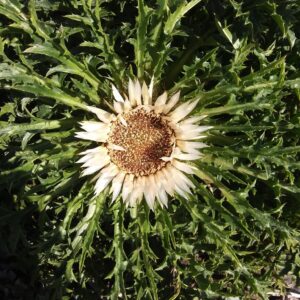Plants for Butterflies and Other Pollinators
Showing 41–48 of 211 results
-
Buddleja davidii Butterfly bush, Summer lilac, do ye zui cao in China Z 5-9
Fragrant, large, lilac to purple arching spikes from mid-summer through fall
OUT OF STOCK
Fragrant, large, lilac to purple arching spikes from mid-summer through fall
Can not ship to: Delaware, Maryland, North Carolina, Oregon, Pennsylvania, Tennessee and Washington
Size: 6' x 4'
Care: Sun in well-drained soil.
Native: Sichuan & Hubei provinces, China
Wildlife Value: flowers very fragrant, attracts many butterflies, excellent cut flower
Awards: Royal Horticultural Society Award of Garden Merit.Buddleja named to honor Reverend Adam Buddle, Vicar of Farmbridge in Essex and botanist. (1662-1715) Davidii honors Fr. Armand David a French missionary who noticed it. Introduced to gardens by another French missionary Jean Soulie (1858-1905). Soulie made dangerous expeditions to the Tibetan border of China and ultimately lost his life when he was tortured and shot in 1905. This species 1st sent to the West (Kew Gardens) by Dr. Ernest Henry who found it near Ichang in 1887. Irishman Dr. Henry worked as a customs officer in Shanghai and an assistant physician in Ichang.
-
Calamintha nepeta ssp. nepeta syn. Clinopodium nepeta ssp. nepeta Lesser calamint Z 4-9
Profuse violet blooms on mint-scented, gray-green foliage gives frosty image, June-October
Profuse violet blooms on mint-scented, gray-green foliage gives frosty image, June-October
Size: 18-24” x 8-12”
Native: Europe and Mediterranean
Wildlife Value: attracts bees, butterflies and hummingbirdsThis subspecies 1st described by Linnaeus in 1753. Genus name comes from Greek kalos meaning beautiful and minthe meaning mint. It is not, however, a mint and is not invasive.
-
Callirhoe involucrata Wine cups, Prairie poppy mallow Z 3-9
Magenta-purple up-facing cups with white centers, June - October
Magenta-purple up-facing cups with white centers, June – October
Size: 6" x 12-24"
Care: Full sun in well-drained soil.
Native: Missouri to Texas
Wildlife Value: host for larva of Gray Hairstreak butterfly and nectar source for many different butterflies.
Awards: Missouri Botanic Garden Plant of Merit; 1999 Plant Select®; Great Plants for Great Plains Plant of the Year 2020Callirhoe is named for the goddess Callirhoe, daughter of Hermocrates, the Greek river god. Teton Dakota fired the dried root for smoke to cure the common cold and its aches and pains. The liquid used to boil the root relieved internal pain. First collected and named by English plant hunter Thomas Nuttall (1785-1859) but then renamed by other botanists. Ferry’s 1876 catalog described it as having “a trailing habit, of great beauty.” William Robinson (1838-1935), father of today’s mixed perennial border, recognized it to be “excellent for the rock garden, bearing a continuous crop of showy blossoms from early summer till late in autumn.”
-
Campanula alliariifolia syn. C. gundelia syn. C. kirpicznikovii Ivory Bells Z 3-7
July-August, creamy white bells dangle on spires above heart-leaved foliage. Vigorous. Cut back to promote 2nd flowering
July-August, creamy white bells dangle on spires above heart-leaved foliage. Vigorous. Cut back to promote 2nd flowering
Size: 18-24” x 18
Care: sun to part shade in moist well-drained soil
Native: the Caucasus and Turkey
Wildlife Value: attracts bees, butterflies and birdsCampanula is Latin meaning “little bell.” Described by Carl Ludwig von Willdenow in 1798
Highly touted by Graham Stuart Thomas, who once referred to it as a “picture of poise and beauty,” -
Canna edulis Indian shot, Arrowroot Z 7-10
Several shoots of red, tube-like flowers atop a tall stalk , taller than its banana plant-like, broad, waxy, oval foliage, green with purple toward the top. Flower all summer.
Several shoots of red, tube-like flowers atop a tall stalk , taller than its banana plant-like, broad, waxy, oval foliage, green with purple toward the top. Flower all summer.
Size: 8’ x 3’ spreading
Care: sun in moist to moist well-drained. In colder Zones, lift and overwinter indoors.
Native: Andes of South America, and the West Indies
Wildlife Value: attracts bees, hummingbirds and butterflies.
Size: Primarily grown as a root crop to eat, roast or boil root like a potato. Root is source of arrowroot used as thickener.Edulis means edible.
Carbon dating of tubers shown grown more than 3500 years ago.**LISTED AS OUT OF STOCK BECAUSE WE DO NOT SHIP THIS ITEM. IT IS AVAILABLE FOR PURCHASE AT OUR RETAIL LOCATION.
-
Carlina acaulis ssp. simplex Silver thistle, Weather thistle Z 3-9
Wide, white saucer flowers above silvery thistle foliage, open on dry days, closed in the evenings and on rainy days. July- September
OUT OF STOCK
Wide, white saucer flowers above silvery thistle foliage, open on dry days, closed in the evenings and on rainy days. July- September
Size: 6-12” x 12”
Care: sun in well-drained soil.
Native: Southern & Eastern Europe
Wildlife Value: attracts honey-beesThe Genus comes from Charles (Carolus). According to medieval folklore Charlemagne used this root to cure the ills of his troops.
-
Centaurea dealbata Persian cornflower Z 3-8
Rosy dome shaped blossoms with fringed petals May-June, deadhead for rebloom
Rosy dome shaped blossoms with fringed petals May-June, deadhead for rebloom
Size: 2-3' x 2'
Care: sun in moist well-drained soil
Native: CaucasusNamed for the Centaur, half-horse and half-man who was a mythical famous healer. This species collected before 1803.
-
Centranthus ruber Jupiter’s beard, Red Valerian, Pretty Betsy Z 5-8
Clusters of crimson, star-shaped florets atop 2’ stems bloom their heads off ALL summer into fall.
Clusters of crimson, star-shaped florets atop 2’ stems bloom their heads off ALL summer into fall.
Size: 24-36”x 12”
Care: Sun in well-drained alkaline soil, drought tolerant
Native: Mediterranean
Wildlife Value: attracts butterflies, bees and hover flies.Centranthus is from the Greek meaning “spurred flower.” According to Culpepper, an English herbalist from the early 1600’s, this plant comforts the heart and stirs up lust. Parkinson, in 1629 describes it “of a fine red colour, very pleasant to behold.”








